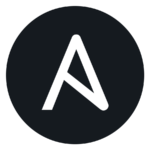Automation is everywhere these days. For over a decade, automated tooling has been developing and maturing. Now, it’s seeing wide adoption across every business size and industry, both in the cloud and on-premise, for IT organizations trying to manage increasingly complex business needs.
Worldwide IT spending will top $5.26 trillion – with a T – dollars in 2024, up 7.5% from 2023. Generative AI will make up a significant portion of that, but investments in Infrastructure as a Service (IaaS) platforms will grow 27%, with much of that being spent on automation to enable those platforms to be fully effective for service delivery.
Businesses that don’t automate suffer from issues like misalignment between stakeholders, an inability to bridge key technologies, scaling challenges, and workforce skill gaps. Left untended, those problems can snowball and create a mass of technical debt and functionality issues that can create serious challenges for their business.
$5.26 Trillion
Worldwide IT Investment in 2024
The Current State of IT Automation
IT Automation is a mature practice with several different niches. Each has its dominant tooling and practices, and the most appropriate path to full-service automation will vary by industry and even businesses within an industry.

For example, if you want to automate your infrastructure’s lifecycle operations, you’ll use tools like Ansible and Terraform. If you want to automate more straightforward procedural tasks, you’ll be using Robotic Process Automation (RPA), which uses “agents” running pre-set steps on the same tools your organization uses manually but doing so faster and more consistently.
For Linux automation, the de facto standard is Ansible. It has a healthy ecosystem of plugins (called collections), excellent documentation, and years of conversation about best practices and standards. Other configuration management tools exist, too, such as Chef or Puppet. Terraform or its open-source fork, OpenTofu, is commonly used to automate the building of hosts. Cloud providers have their own tools that let you define your infrastructure as code (like AWS CloudFormation or Azure Automation), but in a multi-cloud environment, it can sometimes be better to choose a more portable tool.
All of these tools are mature and usually interoperable. The challenge of automation today is selecting the ones that make the most sense for your infrastructure and stitching them together into a platform that can provide the capabilities required to make automation a core pillar of IT service delivery.
What Full-Service Automation Looks Like
“Full-service” automated environments are ones where the automation journey is complete, the systems are in place, and the tools function and are regularly used to deliver service in an automated fashion.
Full-service automated environments use tools, processes, design patterns, and features to automate common infrastructure tasks like patching, deploying hosts, or responding to service degradation with basic diagnostic and troubleshooting steps. These environments are fully instrumented and use things like SSH connectivity or REST APIs to programmatically manage objects.
The infrastructure itself is captured as code (IaC) and stored in source control, allowing engineers to review and audit it easily and implement even more automation that tests it against a known-good state and looks for any issues like misconfigurations or design errors that can be detected in the code before it is deployed to production.
The actual deployed objects implement access controls to prevent – or at least, detect and revert – configuration drift and ad-hoc changes made outside of the IaC repositories. An orchestration system receives input about anomalies and service issues from monitoring and instrumentation data, as well as change requests and user-tracked incidents, to know when automation needs to be executed and against what. It’s able to retrieve and deploy the latest version of the infrastructure from version control servers, guaranteeing the things it builds have been tested and are correct according to the intended design of the environment.
The most critical piece is a team that actually uses these tools to manage the environment. They spend their time writing and reviewing IaC, reviewing issues to see what they can improve, and managing the environment’s lifecycle via automation. The critical factor is that the team is committed to an automation-first mindset about these tools. Unless there is a serious issue, they don’t manually operate on hosts; they use automation instead. The paths for managing the environment and issue resolution go through the orchestrator, not the command line.
Automation ROI: Is This All Worth It?
Short answer: yes!
Forbes estimates that automation saves 40-75% in costs over manually managing your environments. Other reports estimate a 667% ROI over five years, a 76% reduction in unplanned downtime, and a 39% faster time to market.
It’s easy to find even more significant gains when companies incorporate advanced technologies like generative AI into their automation service. Between the reduced maintenance burden, increased speed of delivery, and better agility, it’s well worth the investment in a comprehensive automation platform. And once you’ve built your automation platform, you’ll have an easier time attracting and retaining talented engineers because they’ll appreciate working in a modern, elegant, and forward-first environment.
The journey from the first playbook to full-service automation is long but well worth it. Invest in IT automation to start working towards your modern infrastructure.
This post originally appeared on https://synaxa.io.

